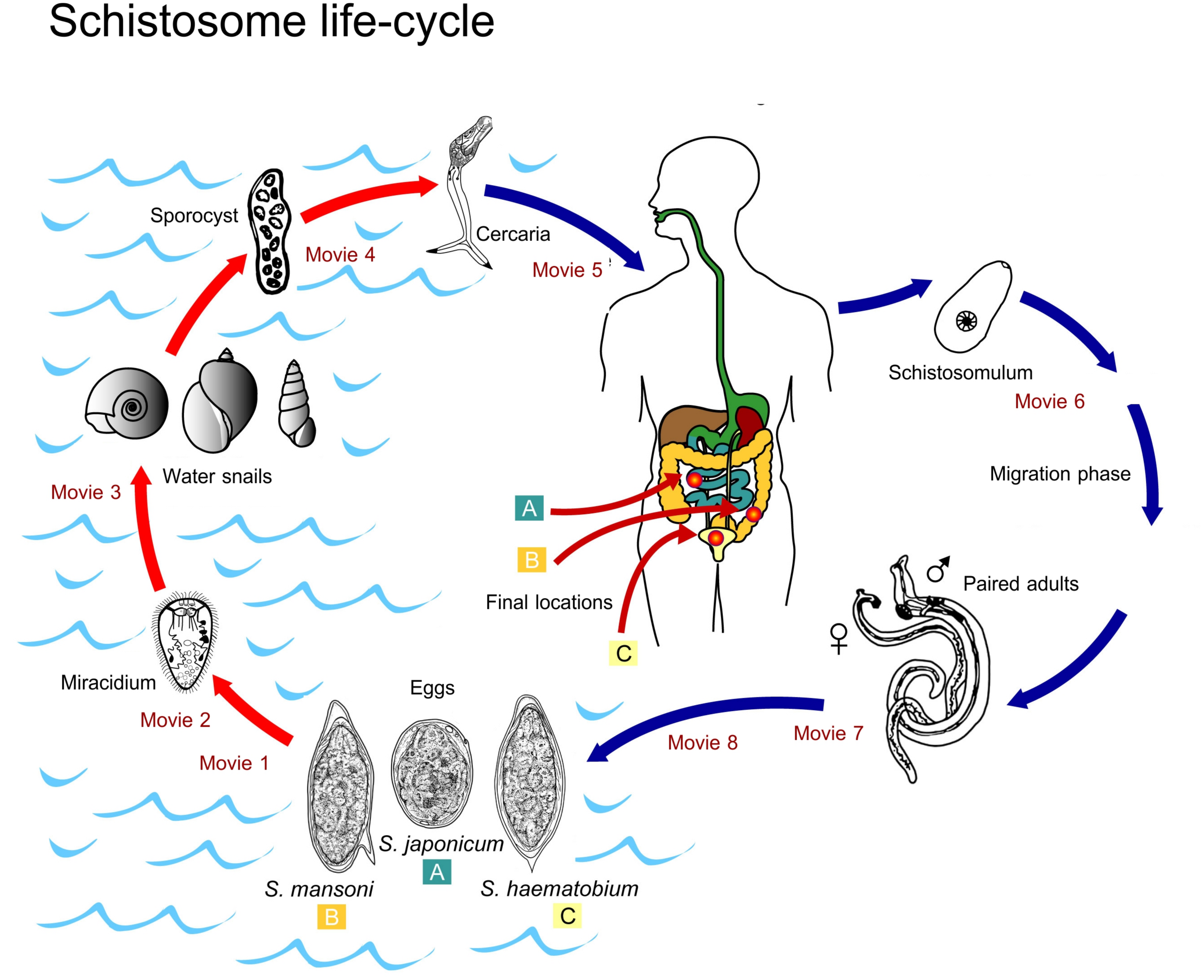Life Cycle
Schistosomes are trematodes (blood flukes) with a complex life cycle. The life stage infectious for humans or other vertebrates is the cercaria, which represents the second free-living larval form of this parasite. Cercariae are released into the water by schistosome species‑specific snails and swim to get contact to the skin of final hosts, such as humans. Following penetration through the skin the cercaria transforms into a schistosomulum, a juvenile form which enters blood capillaries to migrate via lung and heart to the liver. Arriving in the liver the worms have reached adulthood and pair. As paired adults schistosomes finally migrate to their final destination in the mesenteric veins of the gut, except S. haematobium, which colonizes the bladder. For pairing male worms form a ventral groove, the gynaecophoric canal, in which the longer and thinner female resides. This close and permanent pairing contact can last for many years and is a prerequisite for sexual maturation of the female and subsequent egg production. The eggs penetrate the wall of the veins, migrate to the intestinal lumen (S. mansoni, S. japonicum among others) or the bladder (S. haematobium) of their hosts, and are released with the faeces (S. mansoni among others) or the urine (S. haematobium). A multicellular larva develops within the egg, the miracidium, which hatches from the egg stimulated by phototaxis and water contact. As the first free-swimming larval stage the miracidium searches a specific water snail, which serves as intermediate host, and penetrates the snail´s skin. Within the snail, the miracidium transforms into a mother sporocyst. By asexual reproduction daughter sporocysts are generated, which finally develop cercariae, the only infective stage for vertebrate hosts.
To see the movies guide the cursor to the appropriate red texts and click on the title. For some movies you will be redirected to Youtube. In case that movies 7 or 8 do not start upon activation, which may dependt on the browser used, reload this page and retry.
 |
|---|
|
Figure modified from Centers for Disease Control and Prevention (CDC); http://www.cdc.gov/parasites/schistosomiasis/ |
